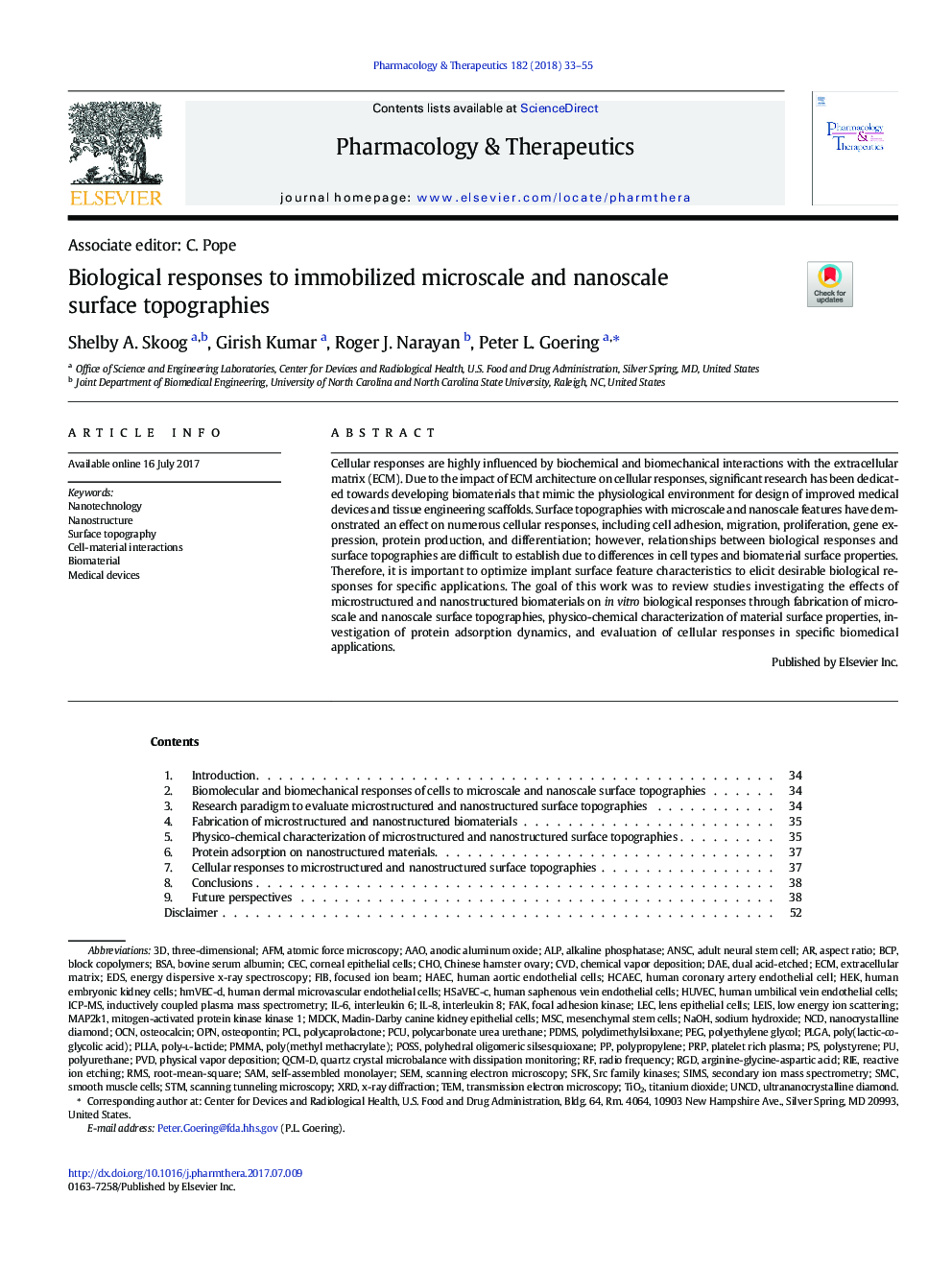| Article ID | Journal | Published Year | Pages | File Type |
|---|---|---|---|---|
| 8536929 | Pharmacology & Therapeutics | 2018 | 23 Pages |
Abstract
Cellular responses are highly influenced by biochemical and biomechanical interactions with the extracellular matrix (ECM). Due to the impact of ECM architecture on cellular responses, significant research has been dedicated towards developing biomaterials that mimic the physiological environment for design of improved medical devices and tissue engineering scaffolds. Surface topographies with microscale and nanoscale features have demonstrated an effect on numerous cellular responses, including cell adhesion, migration, proliferation, gene expression, protein production, and differentiation; however, relationships between biological responses and surface topographies are difficult to establish due to differences in cell types and biomaterial surface properties. Therefore, it is important to optimize implant surface feature characteristics to elicit desirable biological responses for specific applications. The goal of this work was to review studies investigating the effects of microstructured and nanostructured biomaterials on in vitro biological responses through fabrication of microscale and nanoscale surface topographies, physico-chemical characterization of material surface properties, investigation of protein adsorption dynamics, and evaluation of cellular responses in specific biomedical applications.
Keywords
ECMAFMPLGAIL-6QCM-DPCLEDSPDMSThree-dimensionalSMCNaOHFIBBCPAAOHEKRGDSAMFAKMSCHCAECSTMRMSCECHUVECRIEPrPSFKIL-8OPNPLLANCDOCNMDCKLECPVDPCUMAP2K1POSSUNCDPoly-l-lactidehuman saphenous vein endothelial cellsBSASrc family kinasesPolyhedral oligomeric silsesquioxaneArginine-Glycine-Aspartic Acidbovine serum albuminALPAlkaline phosphataseOsteopontinOsteocalcinEnergy Dispersive X-ray SpectroscopyUltrananocrystalline diamondNanocrystalline diamondreactive ion etchingAnodic aluminum oxideHAECTeminterleukin 6Interleukin 8Focused ion beamLEISChoBiomaterialMedical devicesChinese Hamster OvaryCell-material interactionsSurface topographySelf-assembled monolayerTiO2DaeTitanium dioxideChemical vapor depositionCVDPhysical Vapor Depositionroot-mean-squareHuman coronary artery endothelial cellHuman umbilical vein endothelial cellslens epithelial cellsadult neural stem cellMesenchymal stem cellsSmooth muscle cellshuman embryonic kidney cellshuman aortic endothelial cellshuman dermal microvascular endothelial cellscorneal epithelial cellsSIMSsecondary ion mass spectrometryICP-MSinductively coupled plasma mass spectrometryquartz crystal microbalance with dissipation monitoringRadio frequencyNanotechnologyExtracellular matrixSEMScanning electron microscopyTransmission electron microscopyScanning tunneling microscopyatomic force microscopyNanostructureAspect ratiosodium hydroxideXRDX-ray diffractionLow energy ion scatteringmitogen-activated protein kinase kinase 1Platelet rich plasmapoly(lactic-co-glycolic acid)Poly(methyl methacrylate)PMMApolyethylene glycolPolypropylenePolycaprolactonePEGPolystyrenePolydimethylsiloxanePolyurethaneBlock copolymersfocal adhesion kinase
Related Topics
Health Sciences
Pharmacology, Toxicology and Pharmaceutical Science
Pharmacology
Authors
Shelby A. Skoog, Girish Kumar, Roger J. Narayan, Peter L. Goering,
